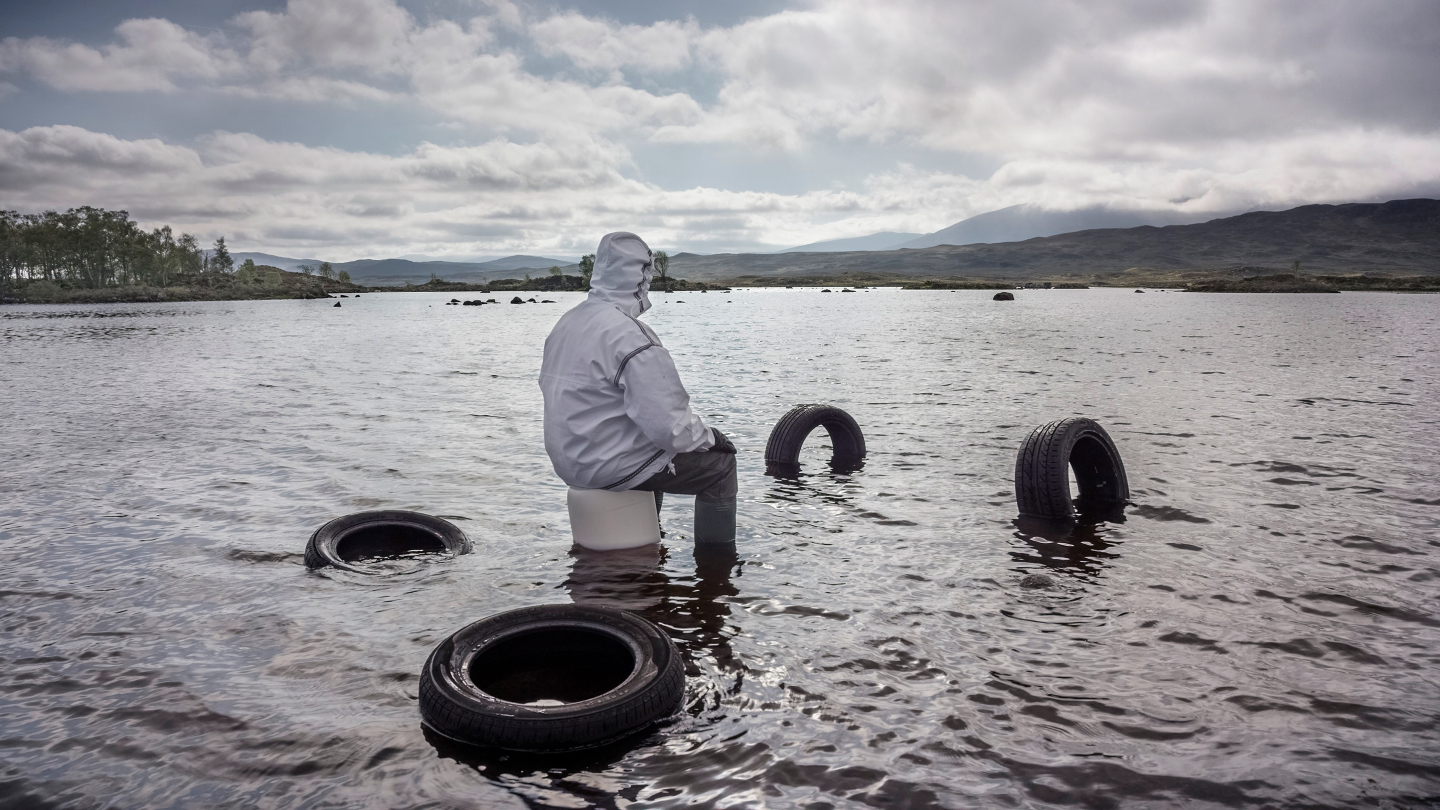
Purple, 2017 by John Akomfrah (Photo: Smoking Dogs Films and Lisson Gallery)
What will the future look like?” Human beings are fascinated by what will be. ArtScience Museum in Singapore projects the future of the world — and invites us to ponder our own fate — with its current exhibition, 2219: Futures Imagined.
It is on a bright and sunny afternoon that we arrive at the Lotus in Marina Bay Sands, the distinctive museum perched on the waterfront. It makes the contrast all the more marked as we step into the exhibition hall with its shadowy and moody atmosphere that heralds our arrival at a future irrevocably affected by climate change.
ArtScience executive director Honor Harger is upfront about the predominant lens with which Earth’s possible futures are viewed here, set against the backdrop of what Singapore and the world might look like when the earth loses its biodiversity and the environmental effects this would have.
subterranean_sg.jpg
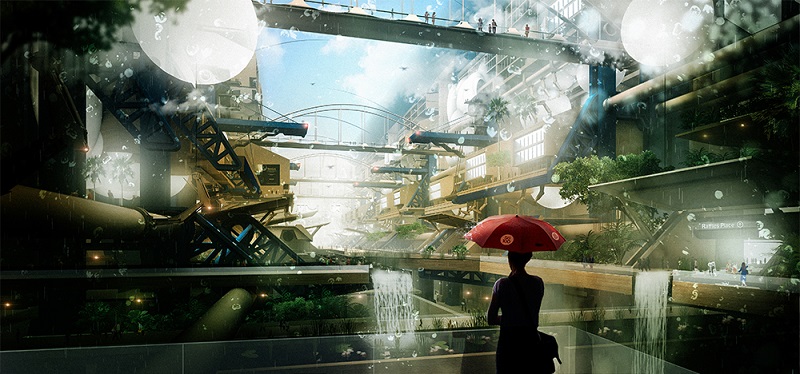
Note the plural word choice here. Instead of one definite future, Harger says the idea is not to preach about the potential dangers ahead but to open up a few of the many possible scenarios through the 10 main exhibits in five sections by 30 artists, architects, designers and writers, both local and foreign.
The idea may not be about post-apocalyptic or dystopian notions, but that is nonetheless the lingering aftertaste that emerges from the exhibition, sans the futuristic robots and flying cars one would expect. The curatorial statement also emphasises a “small futures” approach — focusing on the resilience of humans with a more minute and microscopic imagination of the individual living in this world 200 years from now, carrying the intimate stories and enduring traditions passed down from generation to generation.
Perhaps this convergence of poetic sentiment and realistic exploration had something to do with 2219: Futures Imagined being inspired by Singapore poet Alvin Pang, who during the Singapore Bicentennial celebrations last year — to mark the 200th anniversary of Sir Stamford Raffles’ arrival in Singapore — proposed that if one were to look at the 200 years past, why not also look at the future two centuries from now?
larry_achiampong_relic_traveller_01_and_2_2017-2019_courtesy_of_artist.jpg
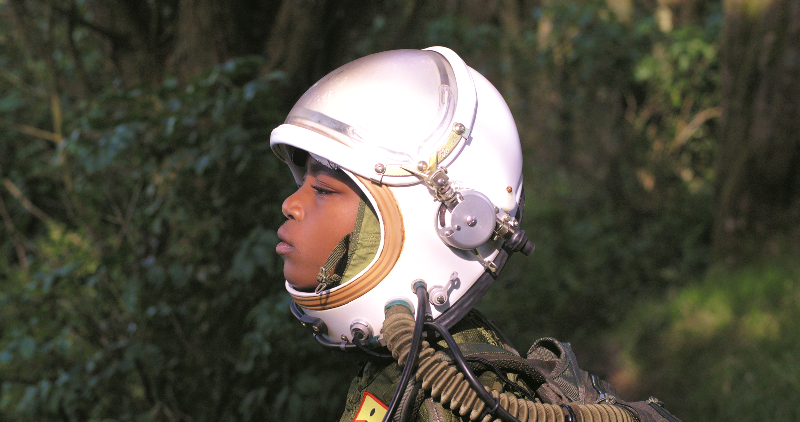
We start in the time tunnel, an industrial-looking pathway of sorts that takes us into Act I — Arrival. There is a sense of foreboding as 2019 is imagined as the year an impending ecological crisis begins.
In Act I, British artist John Akomfrah’s video installation, Purple (2017), greets us. The “quiet but forceful” six-channel video combines hundreds of hours of archival footage with newly shot film and a hypnotic musical score.
Said to be his most ambitious work to date for its scale, we see sequences of oil stains shot in Alaska followed by scenes from Scotland, Greenland and other countries. The artist, whose works contend with the idea of memory, says this one is more specifically about history. “When you sit with history, the idea is that you and the historical are in a kind of a wake, a conversation over a long period of time — that is what I was trying to do,” he says.
sarah_choo_jing_nowhere_near_2016_single_channel_video_installation_courtesy_of_artist.jpg
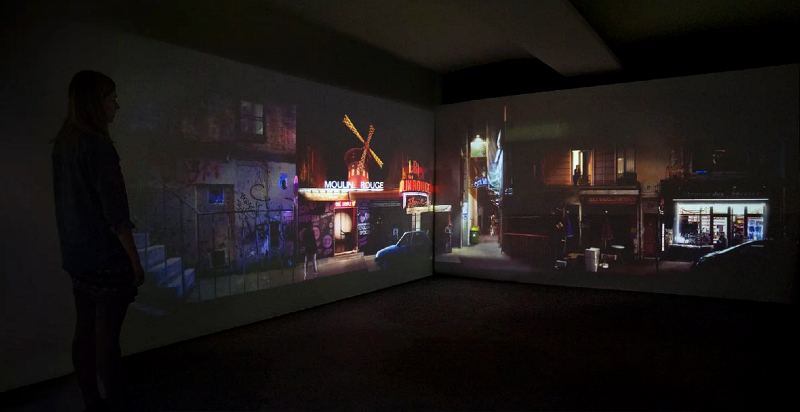
From the transition into this new reality, we immerse ourselves in domestic life in the future in Act II — Home. Singapore artist Sarah Choo Jing sets the scene with a montage of cities in her video installation, Nowhere Near (2016). The photographs of various cities offer a sort of homogenised and universal quality, creating a morphed globalised environment. The decidedly urban scenes capture a sense of loneliness and disconnectedness that are all too familiar to urban folk even now.
With that, we take a closer look at life at home in one of the exhibition’s most compelling works, Mitigation of Shock (Singapore Edition) by British and Indian design studio Superflux, which reconstructed a mid-21st century apartment that we enter through a
re-imagined HDB void deck. An array of personal items, including religious artefacts for worship, collectibles and knick-knacks, even art, are displayed in the public area. ArtScience associate director of exhibitions Adrian George says the idea is that those things that have sentimental value may have to be put outside because the home would have to be used for very different purposes crucial to our survival.
superflux_mitigation_of_shock_2017-2019_courtesy_of_artist.jpg
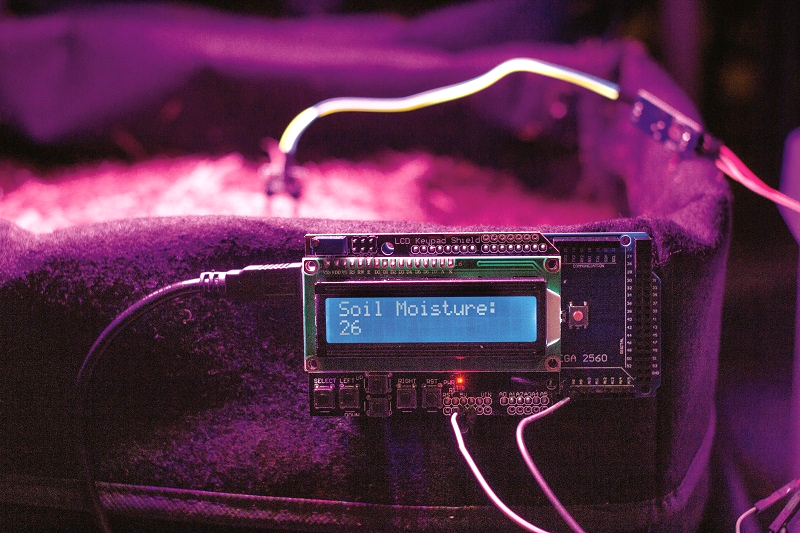
Signs saying “no fishing at the balcony”, or “no motorboat at the void deck”, along with unusually tall bicycles and an inflatable raft offer a hint. Superflux’s apartment offers more clues of extreme weather conditions, economic uncertainty, broken supply chains and resource scarcity in the 23rd century. Apart from the standard furniture, the studio also imagines the need for each home to be a space for domestic food production, with oil drums, foil and artificial lighting to stimulate growth.
The visual effect is most impactful and personal at this point, even as Act III and Act IV take us through the broader topics of nature and resources — what has survived, what have become archival objects of history, what has evolved and how — and the possibility of human migration underground, as proposed by Finbarr Fallon’s Subterranean Singapore 2065 (2016), an architectural plan in the form of a film for Singapore’s National Day Parade in 2065.
act_iii_underworld_finbarr_fallon_subtarranean_singapore_2065_credit_marina_bay_sands.jpg

If there is a must-experience work, it would be Germany-based Rimini Protokoll’s win > < win (2017). It can be described as a participatory theatre piece that speculates on which animal species are most likely to thrive in an ocean affected by climate change. It offers a moment for all the jarring observations and information overload of 2219: Futures Imagined to sink in.
With that, Act V — Memory — brings us back to more familiar ground, specifically cultural practices and traditions. Visitors get to participate in traditional craft-making, which is predicted to become common practice again in the future. Yanyun Chen’s niang (wife) installation also touches on the values of heritage through the role of the woman. It comes across as out of place within this context, but perhaps alludes to the enduring invisible threads that, at the end of the day, keep us human as the world changes.
'2219: Futures Imagined', ArtScience Museum, 6 Bayfront Avenue, Singapore. Until April 5, 10am-7pm. S$19 for adults and S$14 for children who are not Singaporean. Buy tickets here.
This article first appeared on Feb 17, 2020 in The Edge Malaysia.


